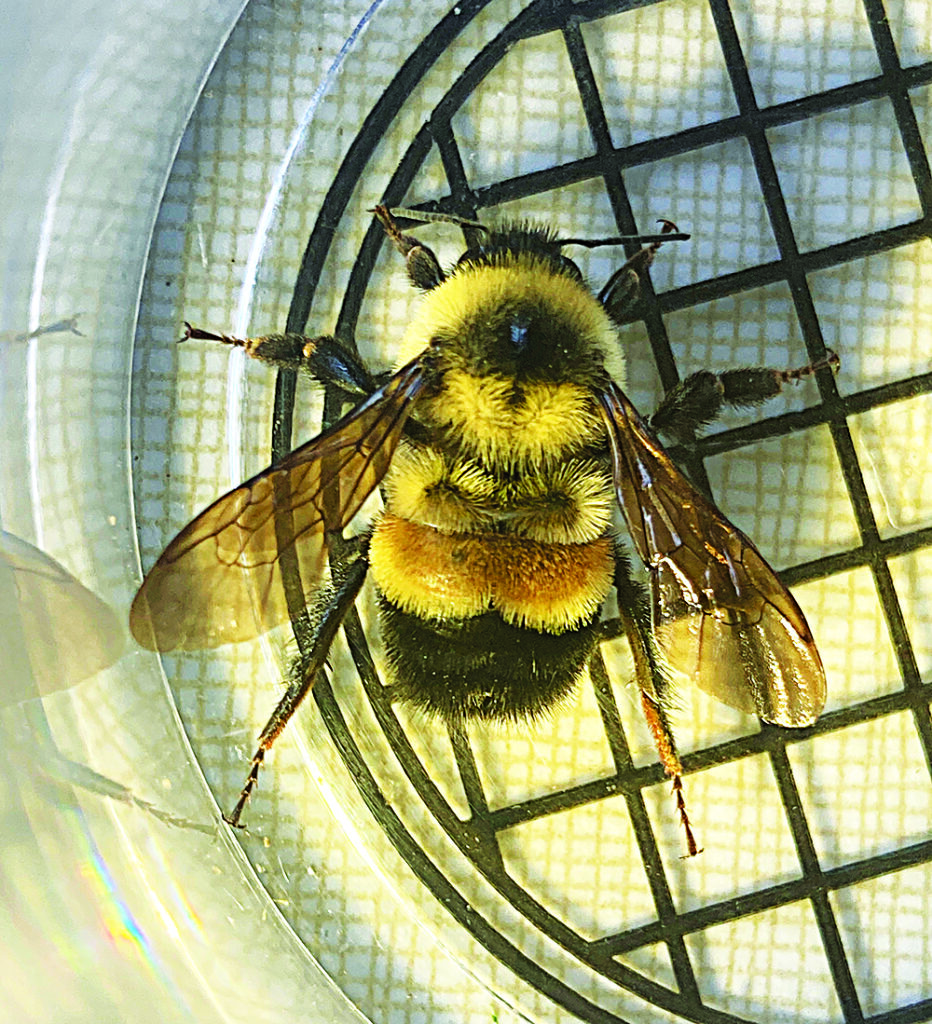During the grip of winter, the plight of bumble bees might not be an immediate thought. However, January 2025 is a good time to take action to protect the Rusty Patched Bumble Bee (Bombus affinis). This particular species has experienced a population collapse over the recent decades and officially became listed as a Federally Endangered Species in 2017. The U.S. Fish and Wildlife Service (USFWS), the agency that is charged with designating species for protection under the Endangered Species Protection Act. See my July, 2021 column for more information about the Rusty Patched Bumble Bee, and the importance of these pollinators.
The recognition that any species of plant or animal is on the verge of extinction is an important step towards its recovery. Part of the process of recovering any species is understanding and protecting the habitat where it is found. However, in the case of the Rusty Patched Bumble Bee, USFWS published a determination that designating critical habitat was not prudent. This was in September of 2020 under the first Trump administration, and the willpower to do something to protect an endangered species was not a priority.
This “do-nothing” approach was challenged by several environmental watchdog groups in a court challenge. It wound its way through a court process which finally found in the favor of the environmental groups, and USFWS was tasked with defining and identifying critical habitat for the species. In November of 2024, USFWS released a proposal that identifies and defines critical habitat for the Rusty Patched Bumble Bee. This proposed rule can be found at this link to regulations.gov
The scientific peer review process that went into the proposal did a good job of defining what makes up critical habitat for the RPBB. The presence and distribution of nesting, foraging, and over-wintering sites are all crucial for the RPBB to survive. The proposed rule also identifies specific areas where populations of RPBB are well documented and seem to be thriving. This includes regions of northern Illinois, southern Wisconsin, eastern Iowa, southern Minnesota, and along the border of Virginia and West Virginia. Maps of these critical habitat regions are found at the end of the proposed rule document (above link).
This process did not identify any of our central Illinois populations of RPBB as being in a defined critical habitat area. This is partly because of the standards used in defining the components that make up an ideal critical habitat area. Our local populations are spotty, not well documented, and interspersed throughout a mostly agricultural landscape. In other words, protecting areas to save our local RPBB populations would be cumbersome in such a fragmented landscape.
Luckily, the public comment period is open on this proposed ruling until Jan. 27, 2025. You can voice your opinion by following the comment link in the document. Public input and support are critical for this process to have any traction under a new Trump administration. He has already promised that anyone who is willing to pay $1 billion (to whom is unclear) will receive expedited environmental regulation approvals. Leaving a public comment is one way you can become involved and have your voice heard. Another way is to take part in citizen science activities such as https://beespotter.org. There are also several ways to improve habitat by gardening with native plants and providing refuge areas for overwintering and nesting bees. You won’t have to pay a billion dollars to be part of that exclusive club, and the effects will be much more positive on the environment. Be critical, be active, be kind.



Recent Comments